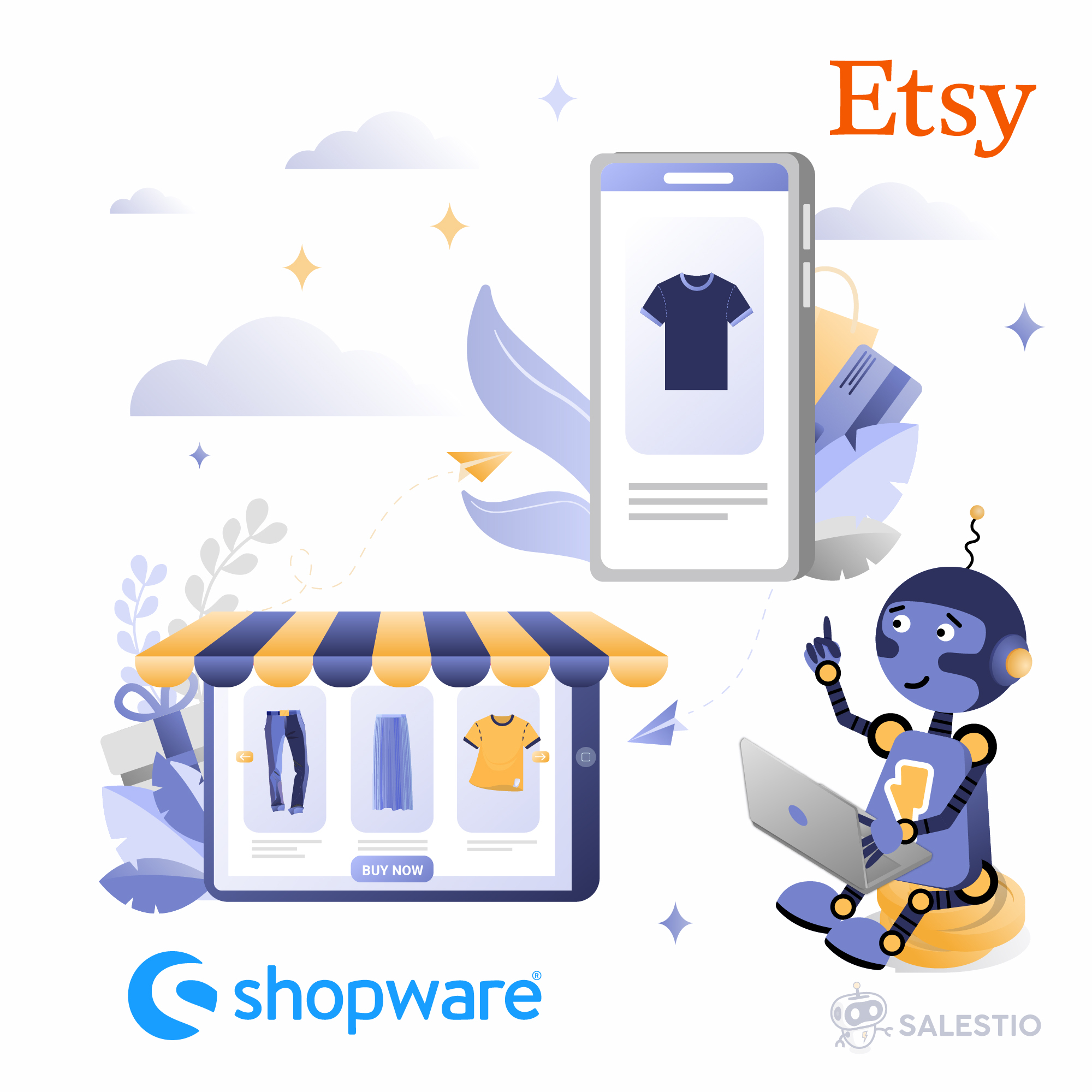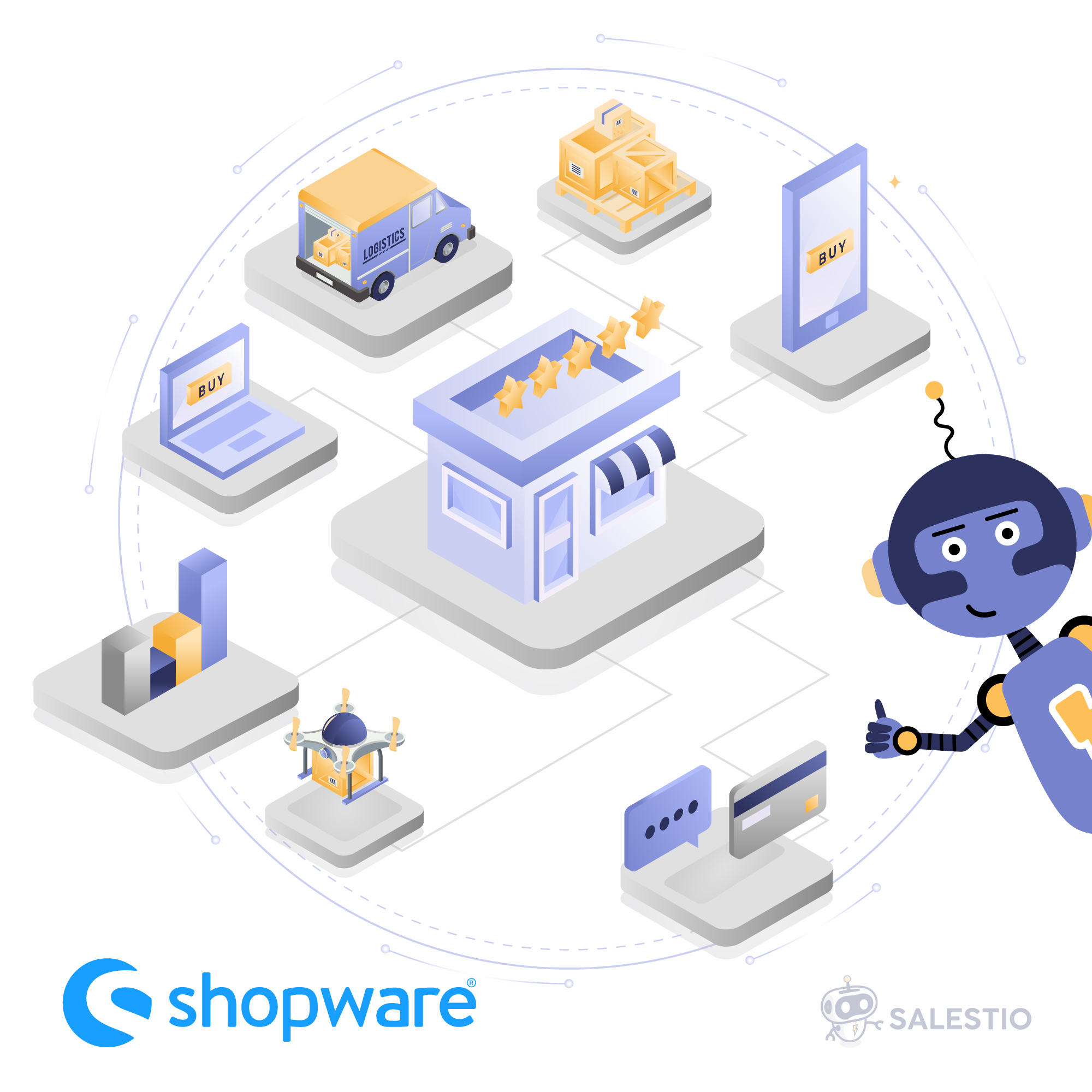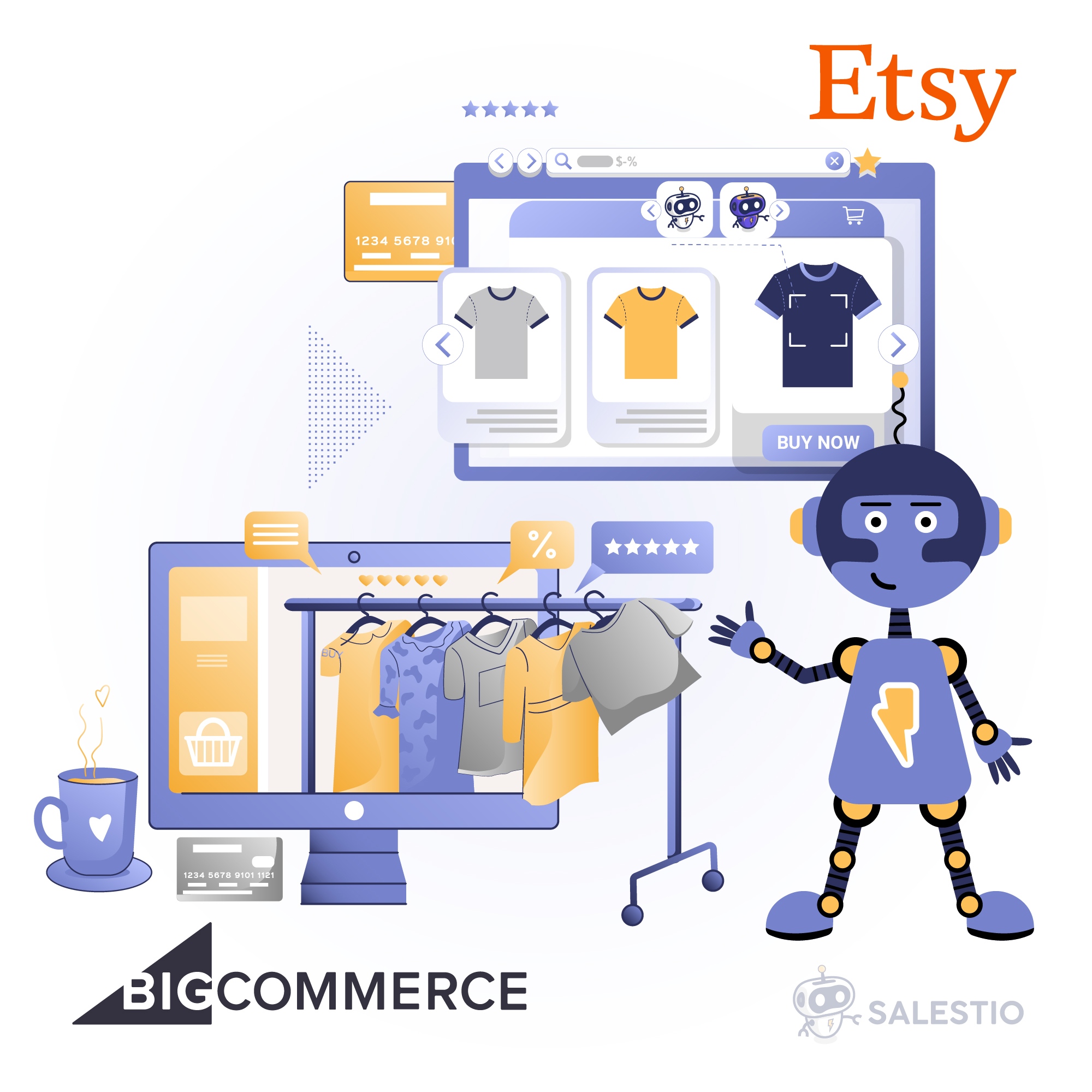03 Jun'23

In the bustling world of e-commerce, managing your online store can be a complex task, especially when you’re selling across multiple platforms like Amazon, eBay, and Etsy. One of the key aspects of this management is handling orders – more specifically, orders imported from these marketplaces into your Shopify store. But with these imported orders comes a unique challenge: managing email notifications.
Most online marketplaces restrict sellers from sending unnecessary notifications to buyers. Even notifications like order shipments should be not triggered by the online store, but instead generated by Amazon, ebay, or Etsy.
And here we come to an important difference with selling in online stores, managing and controlling automatic email notifications for marketplace buyers.
Understanding email addresses for marketplaces buyers
Navigating the dynamics of buyer-seller interactions on online marketplaces such as Amazon, eBay, and Etsy requires a keen understanding of the rules and protocols in place. One such protocol pertains to the safeguarding of buyer email addresses, a measure designed to protect user privacy.
These marketplaces prioritize user privacy, and to uphold this, they employ a system known as email address proxying. In this system, the seller does not have access to the buyer’s actual email address. Instead, they see a proxy email address generated by the marketplace. This method facilitates communication while ensuring the buyer’s personal information remains confidential.
When a message is sent to this proxy email address, the marketplace’s system takes over. It forwards the message to the buyer’s real email address, thereby triggering a notification for the buyer. Simultaneously, the message is also logged in the internal messaging system of the marketplace, providing the buyer with an alternative access point to view and respond to the message.
However, it’s crucial to note that this communication channel is not intended for unsolicited messages. Marketplaces like Amazon explicitly mention in their Terms of Service that sellers should refrain from sending unwanted emails to buyers. This prohibition extends to promotional messages or any attempts to engage the buyer outside the confines of the marketplace.
For example for the ebay marketplace, instead of buyer email, you will see something similar to “unique-hash@members.ebay.com”, as example 415b21349b3e42193d47@members.ebay.com

For Amazon’s behavior for orders, email addresses are very similar. You can receive an email like c4dc1kt7abtb7qr@marketplace.amazon.com, that is connected exactly to your marketplace order and buyer.
For Etsy behavior is a bit different, here you can receive the exact email address of the seller, without any proxy part of the marketplace. And even if you see this email as it is, it is still not recommended to use it for direct-to-customer communications.
Non-compliance with these terms can lead to severe repercussions. Sellers found guilty of sending unsolicited emails or trying to bypass the marketplace’s communication system may face account suspension. Such actions not only disrupt the seller’s operations but also compromise the trust and safety that these marketplaces aim to foster.
Understanding the email system of online marketplaces is indispensable for sellers. It’s about more than just respecting buyer privacy; it’s about maintaining a harmonious relationship with the marketplace and ensuring a seamless selling experience. And let’s talk about possible places where an email notification to the buyer could be triggered.
An email notification with order importing marketplace order to the online store
Most online store providers (like Shopify, Bigcommerce, Shopware, PrestaShop, and WooCommerce), don’t have a build in way to process marketplace orders. So for processing marketplace orders inside the online store, merchants need to use middleware software. One such software is Salestio — Multichannel management for stores.
More details on how Salestio processes order import you can in our articles:
- Efficiency at its finest: Importing Orders from Online Marketplaces to E-commerce Stores with Salestio — Shopify
- Order Fulfillment in eCommerce Platforms, Part 1 (Shopify, BigCommerce)
In this discussion, we will delve into the topic of email notifications, specifically focusing on what elements of an e-commerce store could potentially trigger unwanted email notifications.
Let’s examine the typical flow of an order from a marketplace such as Amazon, eBay, or Etsy.
- A customer makes a purchase on the marketplace.
- Salestio retrieves the order from the marketplace, making it accessible on the Salestio > Orders page.
- Salestio then pushes the order information to the online store, making the marketplace order available on Shopify > Orders.
- During the order import to Shopify, Salestio explicitly specifies that “No notification should be sent to the customer.”
- The seller then fulfills the order using one of the available fulfillment systems or manually via the Shopify back office.
- The fulfillment system updates the Shopify Order Status to “Fulfilled”, which automatically triggers an email notification. This is where we encounter a problem.
- The email notification is sent to the marketplace’s proxy address and subsequently reaches the customer’s email inbox, which is not the desired outcome.
To illustrate better this flow, please check this diagram. Salestio generates an order for your e-To better illustrate this process, refer to the following diagram. Salestio generates an order for your e-commerce platform, but it doesn’t have control over third-party fulfillment systems that modify the Shopify order status, thereby triggering an email notification. This results in email notifications reaching the inboxes of marketplace buyers, a situation we aim to prevent.

Why does this occur? This is a common characteristic of many third-party integrations used for order fulfillment. The process closely mirrors the flow that merchants experience when interacting with an online store interface.
This default configuration primarily focuses on processing store orders. Such notifications are beneficial for keeping buyers informed and engaged, ensuring they remain in the communication loop.

Let’s explore the various solutions that Salestio provides to prevent this issue from occurring, ensuring a smooth and efficient order management process that respects the privacy of marketplace buyers.
Order Email import settings in Salestio
With its integrated solutions for Amazon and eBay, Salestio provides four distinct options for transforming the marketplace order email during the import of customer details and orders to your Shopify store.
You can find these configuration settings for importing emails under the Settings page. These settings can be specified for each of your accounts added to Salestio. The settings for Amazon and eBay are very similar, so for the purpose of this discussion, we will focus on the Amazon section.

Salestio offers the following options that allow you to control on how order emails are imported:
- “In the order” — This is the default option where the email from the Amazon or eBay order is imported exactly as it appears in the marketplace order.
- “No email” — In this case, the Shopify order is imported without an email address. This means that the order for Shopify is created without providing an email address. Consequently, no notification can be sent to any marketplace-related users. We recommend this solution for our users as it effectively prevents unwanted notifications.
- “With selected email” — Here, all marketplace orders will be imported to Shopify and assigned to a single email address. This can be useful for different types of reporting or for visually separating orders from specific marketplace accounts. With this option, the shipping address will be provided as it is set in the Amazon or eBay order, but the customer assigned will always be the same.
- “With selected custom domain” — For this option, the merchant can provide a domain that will be used as a replacement for the marketplace-related domain. As a result, no notification will be sent to the user. For example, if we set a domain @mystore.com, then an email in the marketplace order like abc1121212@marketplace.amazon.com will be replaced by abc1121212@mystore.com.
As previously mentioned, we recommend using the second option, where “no email” data is set for the order. Here’s how the order will appear in this case.

Conclusion
Navigating the complexities of managing marketplace orders in your online store can be a daunting task, especially when it comes to maintaining the privacy of your customers and adhering to the rules of various marketplaces. However, with the right tools and understanding, it’s possible to streamline this process and avoid potential pitfalls.
Salestio offers a robust solution for managing your marketplace orders, providing you with the flexibility to control how customer emails are imported and ensuring that unwanted notifications are avoided. Whether you’re dealing with orders from Amazon, eBay, or Etsy, Salestio’s integration solutions can help you maintain a smooth and efficient order management process.
Remember, the key to successful e-commerce operations lies in effective communication and respect for customer privacy. By choosing the right settings and tools, you can ensure a seamless experience for your customers and a more manageable workflow for your business.
If you’re ready to take your e-commerce operations to the next level, consider starting a trial with Salestio. It’s an easy step towards more effective management of your Marketplace Orders in your online store. To start your trial, simply visit this link. We look forward to helping you optimize your e-commerce journey.





